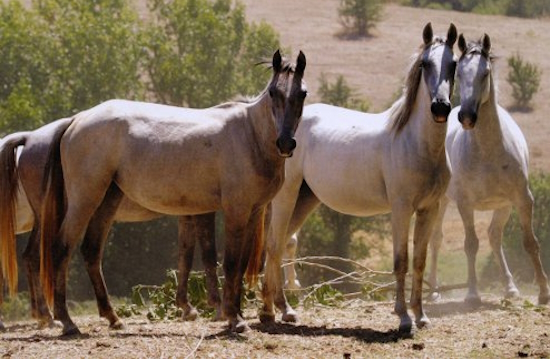Lipizzaner horse
This breed takes its name from Lipizza, a town near Trieste, today in Slovenian territory. Its origins date back to the end of the 16th century, when Archduke Charles of Styria promoted a breeding farm based on a nucleus of mares of Italian origin, coming from Polesine, Aquileia and Verona, and on stallions of Andalusian breed imported from Spain.
The Lipizza stud produced this horse which became famous because the Vienna Riding School, founded by Charles VI in 1729 and called 'Spanish' due to the high component of Andalusian blood in its protagonists, drew exclusively from stallions of this type. race. But already in 1717 horses of this Spanish lineage were no longer used in breeding and had been replaced by stallions of the Neapolitan, Kladruber, Frederiksborg breed and, later, by Arabs. At the fall of the Austro-Hungarian Empire, after the First World War, the kennel had already been transferred to Piber in Austria, but the Lipica one was kept in business thanks to a certain number of subjects that Italy managed to obtain at the peace negotiating table, when the territory where the cradle of the race is located was assigned to her.
The Lipizzan horse is currently bred in many countries, including Slovenia (also in Lipizza), Hungary (in Silvasvarad), Romania (in Fogaras), the Czech Republic (in Topilcianky), Croatia (in Djakovo) and Italy (in Monterotondo, near Rome, at the Experimental Institute for Zootechny). In the Lipizzaner breed, six main lines can be identified, which belong to as many stallions: two Kladruber (Favory and Maestoso), two Neapolitans (Conversano and Napoletano), a Frederiksborg (Pluto) and an Arab (Siglavy).
The Lipizzaner is a "baroque" horse that has retained the imprint of the Andalusian and Neapolitan, harmonious and well structured, robust, not precocious but long-lived, docile and endowed with marked intelligence. Even in its superb bearing and way of proceeding, both at a walk and at a trot, it is reminiscent of the Andalusian horse. The subjects of this breed are born with the most varied coats and only later do they acquire the typical definitive gray coat.
